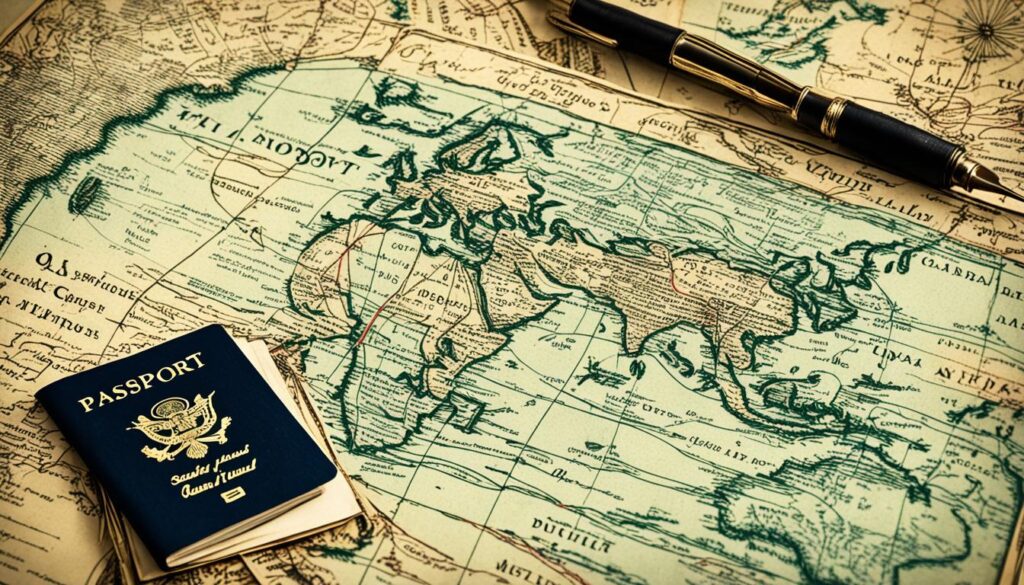Early passports looked different from today’s versions. They used written descriptions instead of photos for identification. Border officials relied on these descriptions to verify travelers’ identities.
Passport descriptions were very detailed. They included name, age, height, hair color, and eye color. Any unique facial features were also noted.
For example, a passport might say: “John Smith, 35, 6 feet tall, brown hair, blue eyes, prominent nose.” This helped officials match the person to their passport.
Written descriptions were used until World War I. Then, countries started adding photos to passports for better security. This change marked a big step towards modern identification methods.
Key Takeaways
- Early passports used written descriptions to identify the holder
- Descriptions included details like name, age, height, hair color, eye color, and facial features
- The practice of using written descriptions continued until World War I
- Many countries began mandating passports with photographs and physical descriptions for increased security
- The transition to modern passports with photographs was a significant step in the evolution of identification methods
The Evolution of Passports: From Written Descriptions to Photographs
Passports have a rich history spanning centuries. They reflect the evolving needs of identification and travel documents. Initially, passports relied on written descriptions to identify individuals.
Ancient civilizations used various travel documents. The Bible’s book of Nehemiah mentions a “safe conduct” pass. In Britain, “passport” became a term around 1540. By 1794, the secretary of state controlled passport issuance.

Late 19th and early 20th centuries saw more international travel. Written descriptions in passports showed their limitations. Inconsistencies and forgery risks highlighted the need for a better system.
The British Nationality and Status Aliens Act of 1914 was crucial. It introduced the first modern British passport with a photograph. This change improved passport security and identification processes.
Photographs in passports marked a significant milestone. They provided a more accurate way to identify individuals. This shift laid the foundation for today’s advanced travel documents.
Challenges and Limitations of Early Passport Descriptions
Early passports relied on written descriptions, which caused problems with identification and security. These subjective descriptions were open to interpretation and could be altered. This led to discrepancies between self-descriptions and official documents.
The lack of standardization made identification difficult for border officials and travelers. Some applicants found the process demeaning, as descriptions could be unflattering or overly simple. Bias in these descriptions added to the challenges.
A clean-shaven Danish man had to regrow his mustache to match his passport description in 1923. This shows how written descriptions alone were unreliable for identification. The lack of visual references often caused confusion and delays at borders.
As international travel grew, the flaws in early passport descriptions became clear. A more reliable method of identification, like photographs, was needed. This would improve passport security and make border control smoother.
The Transition to Modern Passports with Photographs
Passports evolved from simple documents to modern ones with enhanced security. In the early 1900s, governments saw the need for better identification methods. The League of Nations set global passport standards in 1920, requiring photographic identification.
At first, people resisted passport photos, seeing them as demeaning. As international travel grew, secure identification became more important. Eventually, passport photographs gained widespread acceptance.
Modern passports now have advanced security features beyond photos. Many countries use microchips to store biometric data like fingerprints. These improvements make passports harder to forge and improve border crossing identification.
Future passports may have even more sophisticated security measures. These advancements will enhance travel safety and efficiency. Like the Washington-Moscow hotline, passport security is crucial for global safety.

Leave a Reply